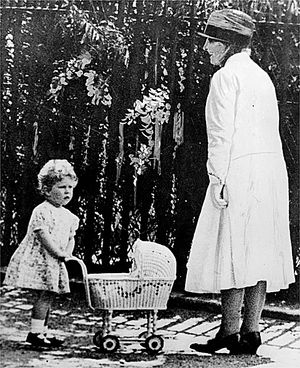Why Elizabeth was never born to be Queen
On April 21, 1926, the Duchess of York safely delivered a little newcomer to the nation. A longed-for first child to a proud and happy duke and duchess, a new princess for the royal line.
And it was the dawning of an era about which Britain could have hardly imagined. The country had in living memory lost a Queen who had reigned for a remarkable 63 years. How could anyone have guessed that the new baby of Bruton Street was destined to one day so spectacularly beat that regal record.
In the private chapel of Buckingham Palace, she was baptised Elizabeth Alexandra Mary after her mother, great-grandmother and grandmother, respectively. But very early on, as she found her given name tough to pronounce, the toddler princess amended it herself to Lilibet. And in those closest of personal circles, Lilibet she occasionally remained for the rest of her long life.

The world of privilege into which the little girl was born was just one side of the national coin. Because only 12 days later, the 1926 General Strike polarised the nation, changing it forever in a rather different way.
In later years as the role of the monarchy fell under such scrutiny, privilege set alongside the sort of bitter deprivation which led not only to the big strike but exposed other glaring examples of financial and social chasms, became a stumbling block for many.

Yet these lives of supposed comfort and protection, also had what might seem to the rest of us, their almost impossible downside. For instance, in January 1927 by order of the King, the Duke and Duchess of York left for a six-month extended tour, their only child committed to the devoted care of her paternal grandparents, King George V and Queen Mary. They missed her first birthday, they missed part of her first year, they missed their baby badly. Prompting the duchess to say: “We are not supposed to be human.”
An early lesson in duty first and a clear pointer to her own feelings in later years, for the little girl who was to become Queen. For all that, the young Elizabeth was a sunny baby and grew to become an equally pleasant little girl. Such a joy to her parents and wider family, she was much loved by staff, and even the stern old Archbishop of Canterbury was once caught on all fours playing horses with Lilibet who was happily leading him along by his beard!

While as chronicled by Lady Longford, a later biographer to the Queen, her mother the duchess once wrote to Queen Mary from the General Assembly of the Church of Scotland: “The moderator mentioned in his welcoming address ‘our dear Princess Elizabeth’ which is I believe, almost unique. It almost frightens me that people should love her so much.”
So she has been.







